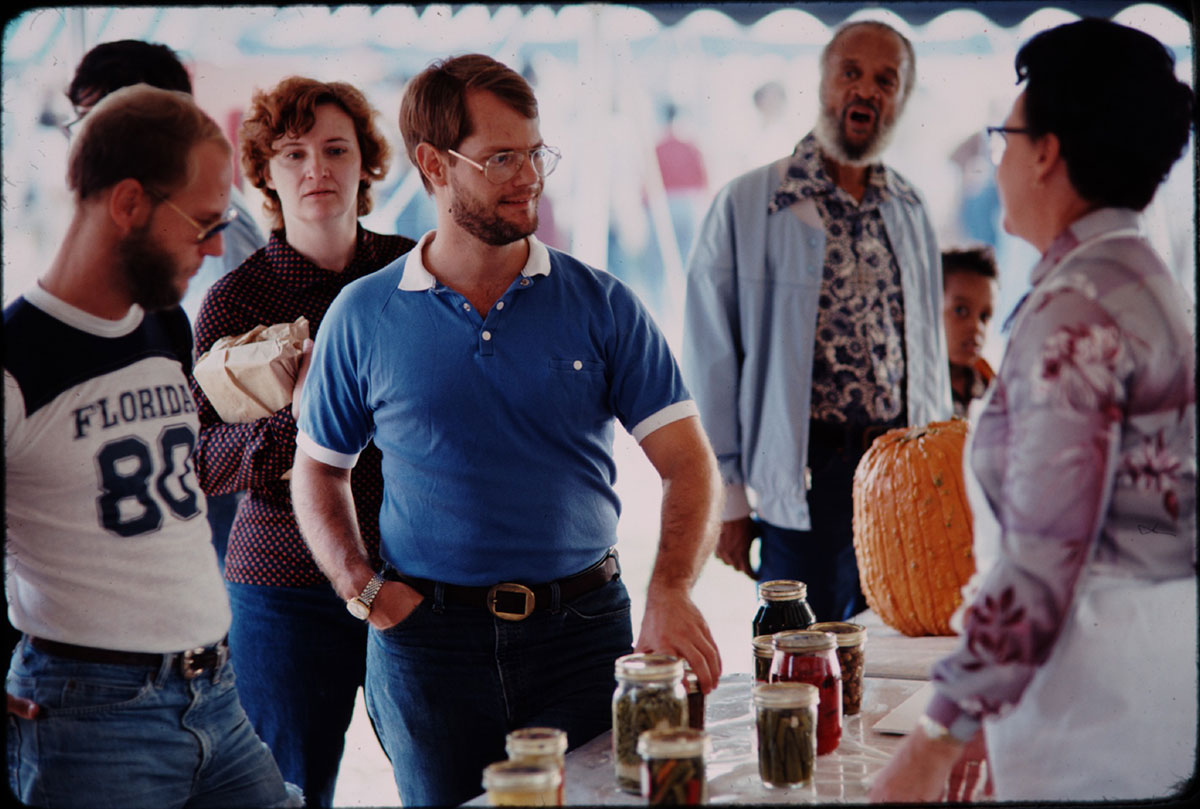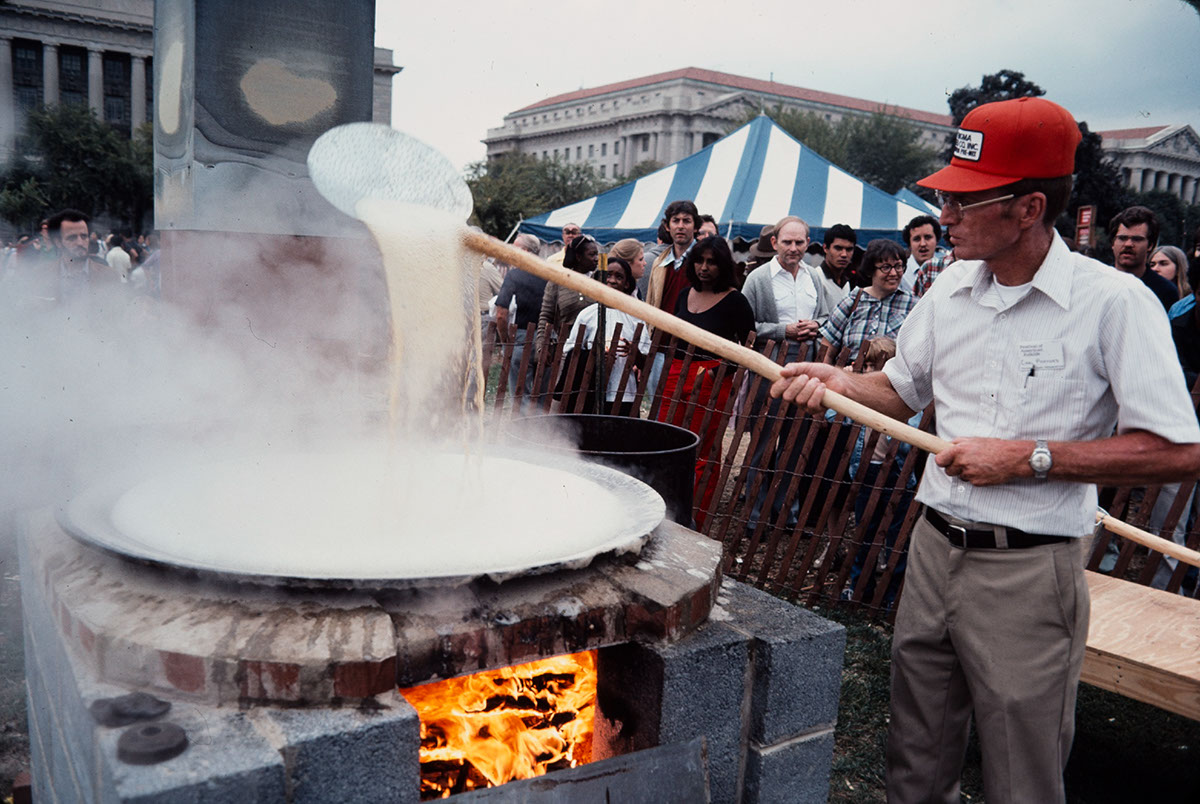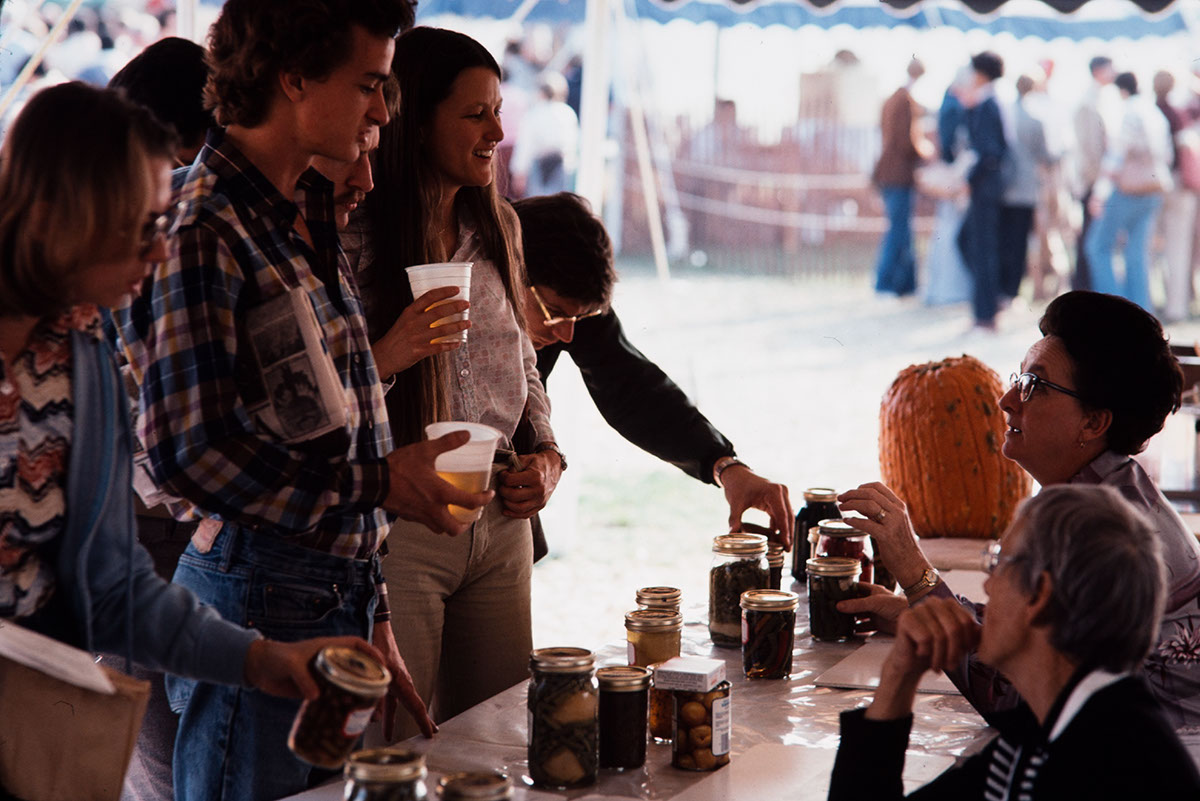This program, sponsored by the U.S. Department of Agriculture, focused on food preservation as an essential component of community activities. Throughout rural America, community events such as Homecomings were seen to act as centripetal forces pulling members back into the center of values, of behaviors, of world view all tied together in activities that reinforced the past and tailored the future - and food was often a major focus of such events.
Community events in America were seen by the Festival as reinforcing and restating the expected style of behavior in attempting to reintegrate distant members to the community's values. No event, no matter how tedious, was all work - nor was any festivity all frolic. The community and its institutions were tied to the common needs of its members for food, shelter, solace, and fellowship. Whether cooking for Homecoming or feeding the firemen, public participation in community events validated membership in a cultural system and provided a common sense of purpose, of contribution, of what needs to be done and how to do it.
Peering into the basement or root cellar of many rural homes, one would find summer's bounty stored for the winter. Potatoes covered with lime might fill a bin in one corner of the room. Colorful jars filled with fruit, vegetables, and meat might line the walls, while crocks full of fermenting pickle beans sat in another corner. Dried apples, beans, peaches, and corn would be stored in brown paper bags, with homecured hams hanging from beams overhead. While food preservation techniques may have adapted to changing times, home canning, pickling, curing, and drying remained vital traditions in many communities nearing the end of the 20th century. They were economical in many ways, and the final product was easily adjusted to community preferences. Homemade biscuits, cookies, and pies, home-processed hams, dilly beans, sauerkraut, and leather britches simply tasted better to people who were accustomed to them.
1980 Festival presentations included wine making, meat smoking, butter churning, canning, cane syrup making, and "found food" preparation, as well as a daily candy pull and workshops discussing the knowledge and lore of community-based food preservation activities.







